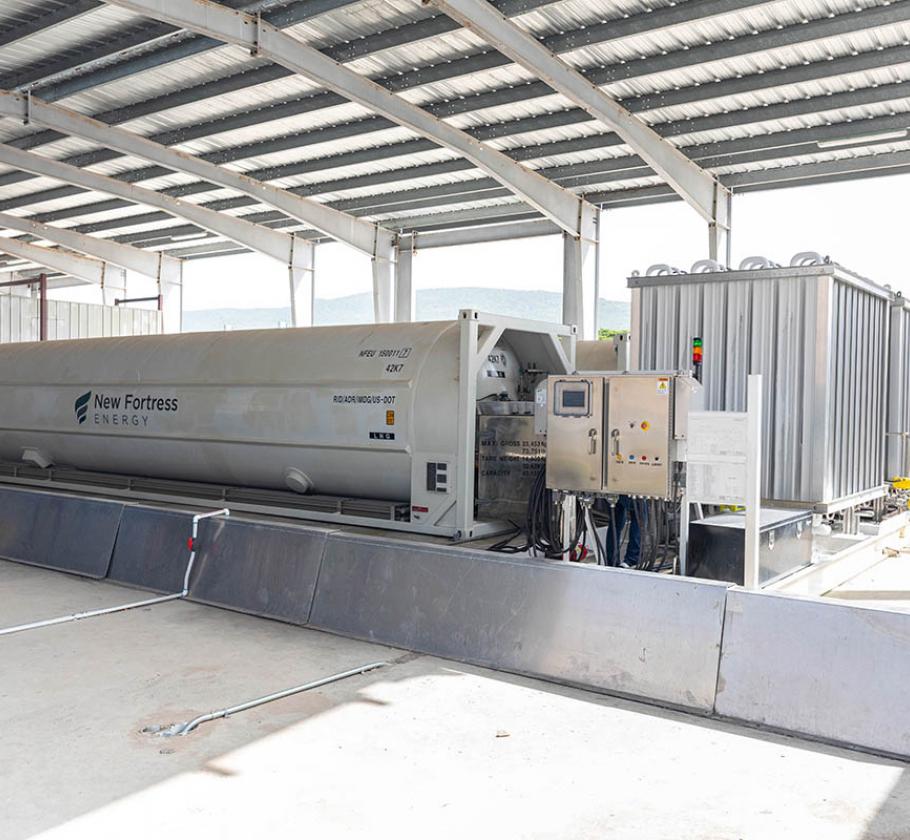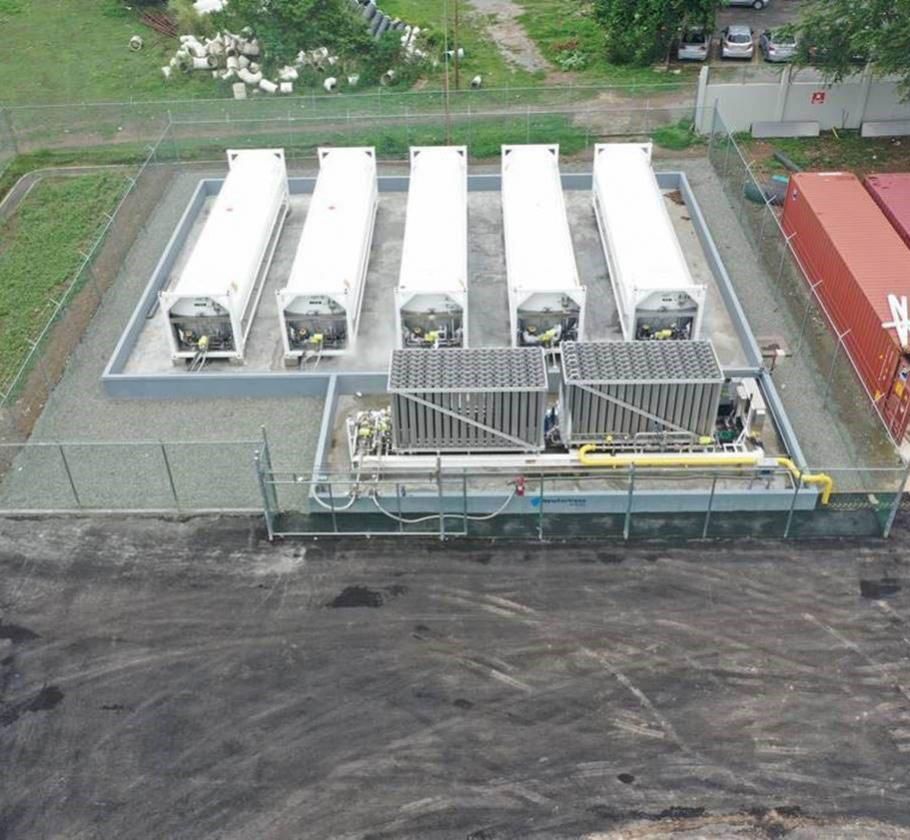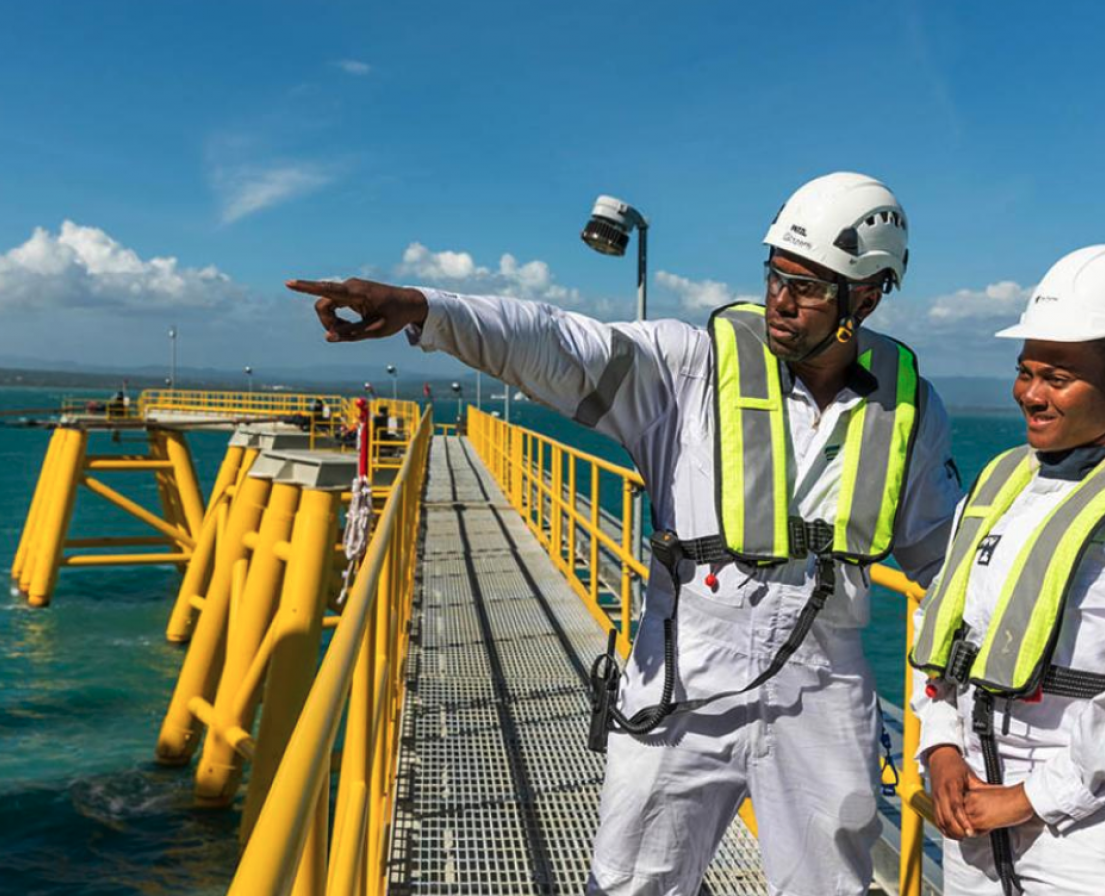LNG: a new school of thought for
the University of the West Indies
LNG CASE STUDY
A new school
of thought
Providing electricity, heating, and cooling for 15,000 high-energy students was resulting in high energy costs for the Mona Campus of the University of the West Indies (UWI)(1) public university system in Kingston, Jamaica. When the university was ready to make a change in how it supplied energy to the campus, New Fortress Energy (NFE) was there to make the grade with liquefied natural gas (LNG).

UWI Orientation
UWI had two primary motivations to find a new way to supply energy to its bustling campus:
- Economics: UWI pulled more than 25,000 megawatt-hours each year from the Jamaican power grid, and consumed 700,000 gallons of liquefied petroleum gas (LPG) a year for its absorption chillers. With a single power distributor supplying the Jamaican grid, UWI had no leverage to negotiate for lower electricity rates.
- Environment: As a thought leader, UWI sought to spearhead the transition to a lower-carbon, cleaner energy source to create a “green, progressive campus.”
As a university serving thousands of students and staff, UWI also needed to ensure a timely and seamless transition, minimal impact and no safety issues during both initial construction and ongoing supply activities, reliability of the new supply, and a reduced environmental footprint.
Course Selection
UWI decided to move to using onsite power generation. After considering oil-based fuels such as LPG, which it was already using, and heavy fuel oil (HFO), the university decided the carbon footprint of those options was still too big. NFE engaged with members of UWI’s senior staff to create a solution using liquefied natural gas (LNG) to reduce costs and decrease carbon emissions significantly more than alternatives, while creating a cleaner, healthier campus environment. Through this full-service solution, NFE managed every step of the process, easing any concerns about switching to a new fuel.

The Answer’s as Easy as Liquefied Natural Gas (LNG)
To allow the university to test the solution and the partnership before committing to a full transition, NFE led a two-phase approach:
- Phase 1: Transitioning Chillers from LPG to LNG
In just four months, NFE funded and completed a pilot project to convert UWI’s absorption chillers from LPG to LNG, earning UWI’s approval to proceed to the second phase.(2) - Phase 2: Onsite Power Generation via Combined Heat and Power
UWI financed the construction of an onsite combined heat and power (CHP) plant. NFE identified suitable land to minimize any impact on students and staff, and also provided financial modeling, as well as cost-saving and lifecycle cost analysis. Today, NFE supplies the CHP plant with liquefied natural gas (LNG).
A Straight-A Report Card
Liquefied natural gas (LNG) may be colorless, but NFE’s liquefied natural gas (LNG) solution passed with flying colors at UWI. Check out these numbers:
- The new CHP plant has reduced total electricity and cooling costs by more than 40 percent, saving over $2MM per year.(3)
- The conversion resulted in a 22 percent reduction in CO2 emissions–the equivalent of planting over 95,000 trees per year.(4)
- UWI has also reported reduced downtime for maintenance, which in turn increases reliability for students and staff in pursuit of higher education goals.(5)
In partnership with NFE, the university is now providing a healthier campus while setting an example to other local institutions. It’s a test NFE was proud to ace, both for UWI and for the start of a brighter future for energy delivery worldwide.
